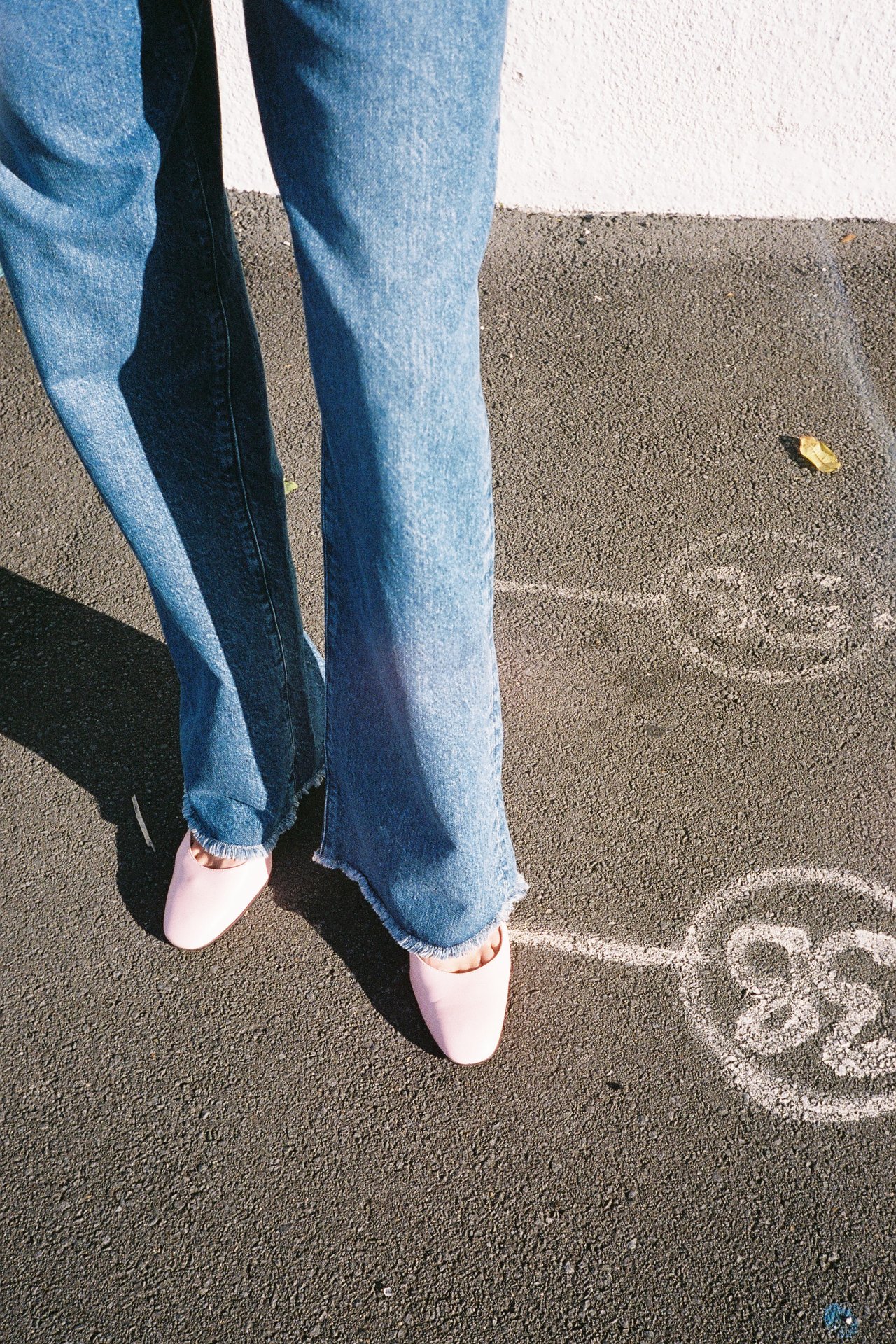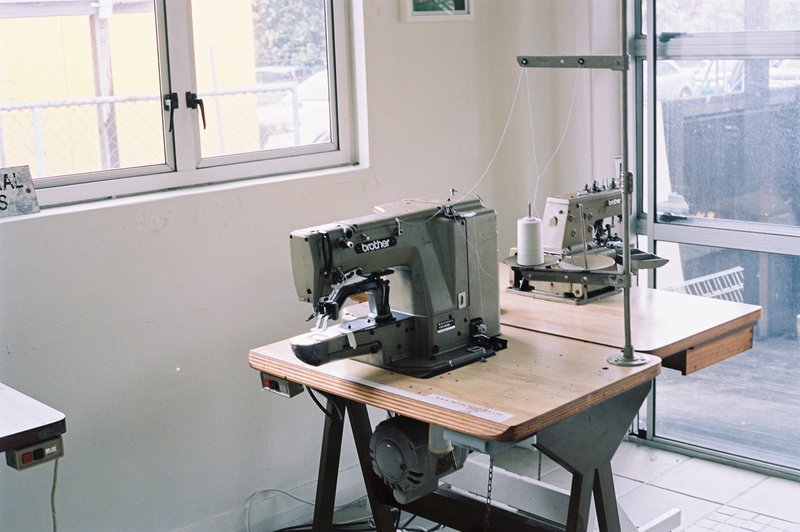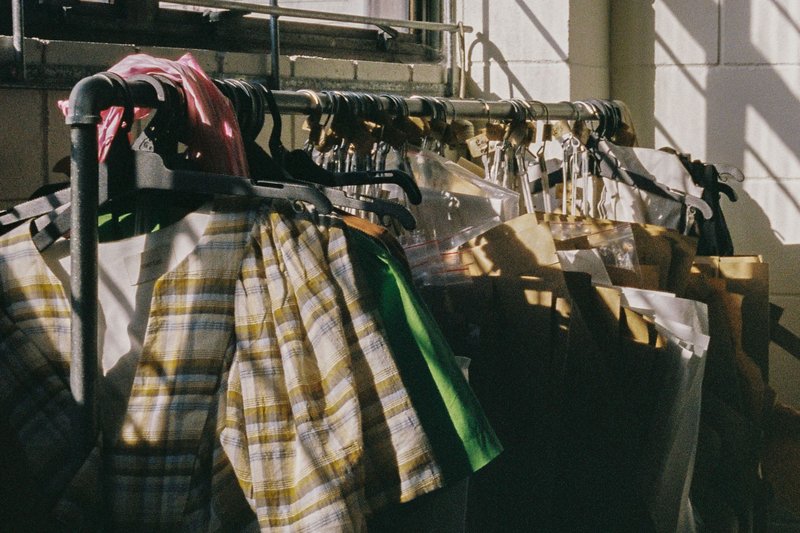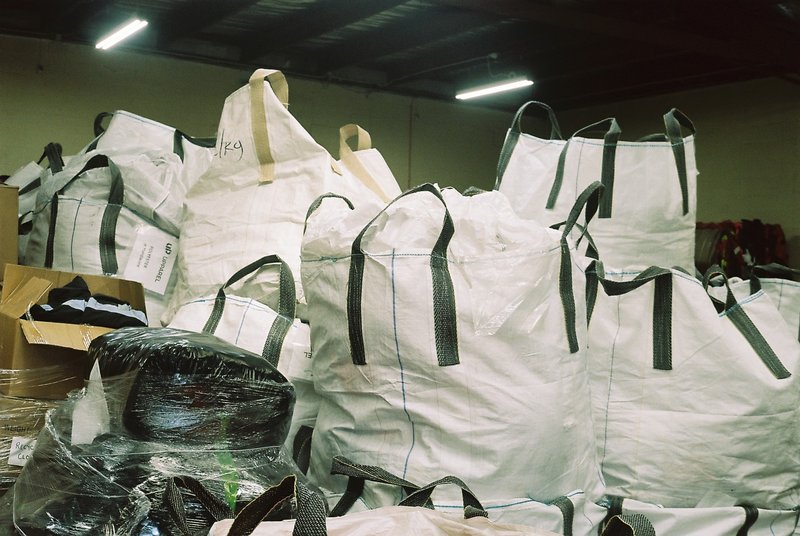Between Stella McCartney and Patagonia lies Maggie Marilyn, the South Hemisphere A-list sustainable fashion brand, built from the ground by farm-town, Bay of Island-born Maggie Marilyn Hewitt. She founded her namesake brand in 2016, at the fresh age of twenty-one, with the simple purpose of using fashion to create a better world.
I am a fan of Maggie Marilyn. I can't help it. I first heard of the brand through Episode 81 of Wardrobe Crisis, one of my favourite fashion podcasts, in which Clare Press interviewed Maggie Hewitt. A delight to listen to, I was impressed by Maggie's (contagious) passion and realism to create "a better world" through her clothing. Later, we briefly crossed paths, once at a panel conference where she spoke and then at her Newmarket flagship in Tāmaki Makaurau, Auckland. I had joined Trace to pick up Maggie Marilyn "MM" clothes for a client shooting, and Maggie's defiant and cute dachshund, Honey, was hanging out in the parking lot where I was waiting. Maggie came out to pick her up, said hi and pointed out that my All Birds yellow sneakers were cool. I liked her vibe.

I have purchased Maggie Marilyn new and second-hand, as much as my bank account could handle (i.e., not a lot). Last year, in Spring, we had an opportunity to borrow some garments from the 2024 Resort Collection, on loan for a Storm and India photoshoot. So we strolled around Point Chevalier and played around with the garments (spoiler alert: I loved wearing these clothes!). I wanted to write this piece from the start of Lagom five years ago. So we are here for a good time.
Creating Maggie Marilyn and the Rise of an Emerging Designer
The success story of Maggie Marilyn, and by extension, Maggie Hewitt, is one told many times but that we never get tired of reading. During her tenure as a university fine arts and fashion student, Maggie Hewitt knew from the get-go that she would build her own business. Yet, at the end of her degree, which highly focused on sustainability, she was also convinced that she wanted to make a difference in the fashion industry, an industry she had grown profoundly disenchanted from as a recent grad. This feeling led Hewitt to ponder whether she would get away from fashion or work hard to change it. Thankfully for us, she picked the latter.

With her knowledge, profound convictions and youthful flair (plus financial and mentoring support from relatives), Maggie Hewitt started her label, creating respectful-to-earth, streamlined, feminine garments at a competitive price point. This way, she could fill a void in the sustainable fashion market, which the serious alternatives at the time, Stella McCartney and Gabriela Hearst, were too hyper-luxury for the average consumer. "That started me on my journey—very naively, I might add. In many ways I think it was good to start a brand with very little idea about how hard it would be." she recalled in an interview for Denizen in 2020.
The crowd responded to the call. MM's first collection in 2016, stocked on luxury retailer Net-a-Porter, sold out in less than 72 hours, making Maggie Marilyn a relevant contender in the fashion scene of New Zealand and worldwide. MM also dressed Michele Obama, Megan Markle, Livia Firth, and Karlie Kloss, to name a few. And so, with celebrity endorsement came an ever-increasing demand, leading to a significant production increase and rigorous wholesaler demands.

In an interview for the Financial Review in 2019, Maggie Hewitt explained how she saw herself more as an entrepreneur than a designer. And it showed in the trajectory of her label, setting up high standards and ambitious goals. Following the launch of her second line, Somewhere, and the pandemic, she decided it was time to make her next bold move. And so, despite her fulgurant international success, in 2020, MM excited the global wholesale market and online retailers, driven by a desire to not compromise with their core values towards industry systemic change. "Sometimes I think that maybe, in five years, we won't actually be known as a fashion brand but as something different". This decision pulled the brand out of the regular seasonal fashion calendar, dropping pressure on production and giving back control, accompanied by a 73% drop in carbon emissions and a more steady growth for the company.
This business strategy change towards a direct-to-consumer model motivated the opening of a few brick-and-mortar MM shops, "Homes", as the brand called them, in Aotearoa, New Zealand and, later, Australia. The boutiques are also the perfect canvases for community activations and hosting events with like-minded individuals and friends. The Maggie Marilyn website became an important asset, providing online sales, garment and supply chain information, in addition to regular content and communication published in the Journal. Last year, following the opening of the MM store in Sydney and an increasing move towards Australia, the label returned to Australia Fashion Week. Maggie Marilyn presented their Resort Collection 2024 in Sydney, which individual garments have been feeding the website offering since.
Dressing in Maggie Marilyn.
Maggie Marilyn dresses women and men. Forever and Somewhere are the two lines of the collection.
Forever is the original MM style, pieces to keep, well, forever, through which we recognise Hewitt's signature of romantic, light-spirited and confidence-building designs. Expect loose tailoring, sash detailing, ruffles, pleats and fluidity, shine, statement colours, and patterns. Available for a limited time and suitable to all bodies. MM Forever garments are of modern luxury, something to wear for a special occasion or sunset drinks with friends made chic. And so is the pricing. One of my favourite blazers, "Love Will Lead You Home" in floss pink sparkle, available online for $1,495, is out of reach for me, yet is half-price a Stella McCartney similar pink blazer. What I have from the Forever line I had to source from second-hand, and I love them.

In 2019, Maggie Marilyn launched an additional line of curated, evergreen staple clothing. Somewhere is a collection that is also timeless, made of easy-to-recycle and fully traceable fabrics, with the long-term goal of being 100% circular. Most of the line is unisex and also includes specific men's and women's garments for all shapes. Availability is permanent, with the exception of limited-edition drops. It includes sportswear, tailored and essentials. The designs are more straightforward, streamlined and colourblocked than Forever. It is to wear every day. Somewhere is advertised as "affordable", though this statement is, again, up to debate. In all fairness, it is challenging to make low-priced, yet highly sustainable, garments nowadays, and the Somewhere pricing reflects this situation. I have bought new track pants and shorts, a Merino dress, a one-shoulder top from Somewhere, and other items second-hand. They are comfortable to wear and staples in my wardrobe. Margot Robbie likes her shirt, too.
The rest of the offering includes collaborations, currently with FELLA Swim. You can also find branded accessories, such as shoes, scarves, and, more recently, socks.

In terms of fabrics, in the last years, there has been a rotation of deadstock fabrics, econyl® regenerated nylon, ethical, non-mulesed wool, linen, organic cotton, post-consumer waste recycled polyester and tencel™. I am not sure what I think of polyester and nylon. I am no fan of wearing plastic. They do release microplastics. But if there are no alternatives for what MM wants to achieve in terms of garment style and pricing, at least the plastic the company sources is from supply embedded in circular resources. They used to be silk, but ethical silk is difficult to source.
What is sustainability for Maggie Marilyn?
"Success to me, will always be measured by the positive impact we can make on the fashion industry." Maggie Marilyn outlines their sustainability practices on most website pages, reflecting on the commitment to transparency dear to Maggie Hewitt. Each garment on the website encompasses a supply chain section sharing supply chain information, making it easy to know where the garments were made, and not only that but where the raw material was sourced from and in which location it was transformed. If you'd like to know more about the entire supply chain of the label, the Planet and People sections lay out the information for you. In addition, the 2022 Impact Report has a lot of insights into what sustainability translates for Maggie Marilyn. The label has been B Corp Certified since 2022 and requires its suppliers to abide by a strict Code of Conduct. In a world where consumers with a conscience are in a permanent state of tension to buy the right item without compromising their values, it is a beneficial experience to access this information with such ease.

The garments must also be durable in their design and their wear. In the Guardian last year, Hewitt stated, "Longevity is something I think about a lot [...] we've always wanted to design clothes that our customers can share with people, wear and re-wear." I have bought a few MM clothes from the second-hand market, and I can confirm that they all seemed brand new. And even better. In 2021, I had a moped accident on my way to work. The road was slippery because oil dropped from another vehicle—Auckland Transport had just added sand to the road and made it even more slippery. My motorbike fell on its side while driving on a turn. I was wearing the MM grey Merino track pants. I felt hard on the road and dragged for a few metres. While my thigh was badly bruised, the pants had nothing but an oil stain, which washed away in the washing machine! That is the longevity we are hoping for. I love those pants.

Originally advertised as made in Aotearoa, New Zealand, across eleven factories, the clothes are now mainly made in Turkey, China and Aotearoa. We understand this international expansion, as New Zealand's offering in the garment industry is unfortunately minor, and we can imagine nowhere to match the brand's growth. Yet, it is hard to reach carbon neutrality through global production, as intended in the label's early days. The Good On You app gives a clear overview if you seek a more independent analysis of Maggie Marilyn's commitment to sustainability. Despite high standards, there is still some work for MM. They call it "progress not perfection".
Maggie Hewitt also thrives in building close relationships with her manufacturers. For example, there are regular trips to Portugal to visit material suppliers and makers. Prior, for her 2020 Resort collection, she had shot the collection's lookbook in between three of her then factories in Tāmaki Makaurau, Auckland, giving the makers a unique opportunity to witness how the clothes and outfits looked before their final stage, the sales, and proudly see their work alive.

As she stated many times in the press, Maggie Hewitt is more of a creative entrepreneur with strong ethics than a typical fashion designer, and her success is more due to endless hard work than "inherent talent". Her mission from the beginning is simple—demonstrating that beautiful, ethical clothing doesn't have to cost the Earth and its people. That is her main driver, what gets her out of bed. Her designers reflect her problem-solving mindset. They are always comfortable. It's her first requirement, really. These garments could be worn with infinite heels on a high street or barefoot at the beach. All garments from Forever have a name, telling a story.
What is next for Maggie Marilyn?
“Our purpose is to use fashion to create a better world. Our mission is to help transition the fashion industry to one that is transparent, circular, regenerative and inclusive. Our vision is for a healthy planet, empowered people and an economy that puts these things first.” Maggie Hewitt in Together Journal.

Maggie Marilyn reminds me of a version of Jacquemus, a little. They are both individuals from outside the big city. They love the sun and the sea, their friends and holidays. They have a clear drive, the WHY, that keeps them in line with their brand's philosophy. Thanks to their perseverance, continuous labour, and an effective support system keeping them grounded, they built a brand that is more than just clothing; it is a lifestyle. The designs differ from what we see around them; aesthetics and quality are unmatched, and they stand out amongst their local pairs. There is a trend that does not correspond to my vision of ready-to-wear fashion, which is about hiding bodies under oversized, unformed garments. I see a lot of this in Aotearoa, New Zealand. And so what I like about Maggie Marilyn and Jacquemus is that both of them don't hide the body; they promote and enhance them, all types of features, and it is refreshing. Where MM and Jacquemus differ is, of course, in their commitment to sustainability, circularity and ethics.
In her early days, in 2017, Maggie Hewitt told Alice Birrell in Vogue Australia "That is all you can hope for [...] for people to fall in love with what you do." Seven years later, as Hewitt will give birth to a new life on this Earth this year, I can only wish for Maggie Marilyn to keep going, demonstrating that another fashion world is a reality and making us dream as long as possible.




